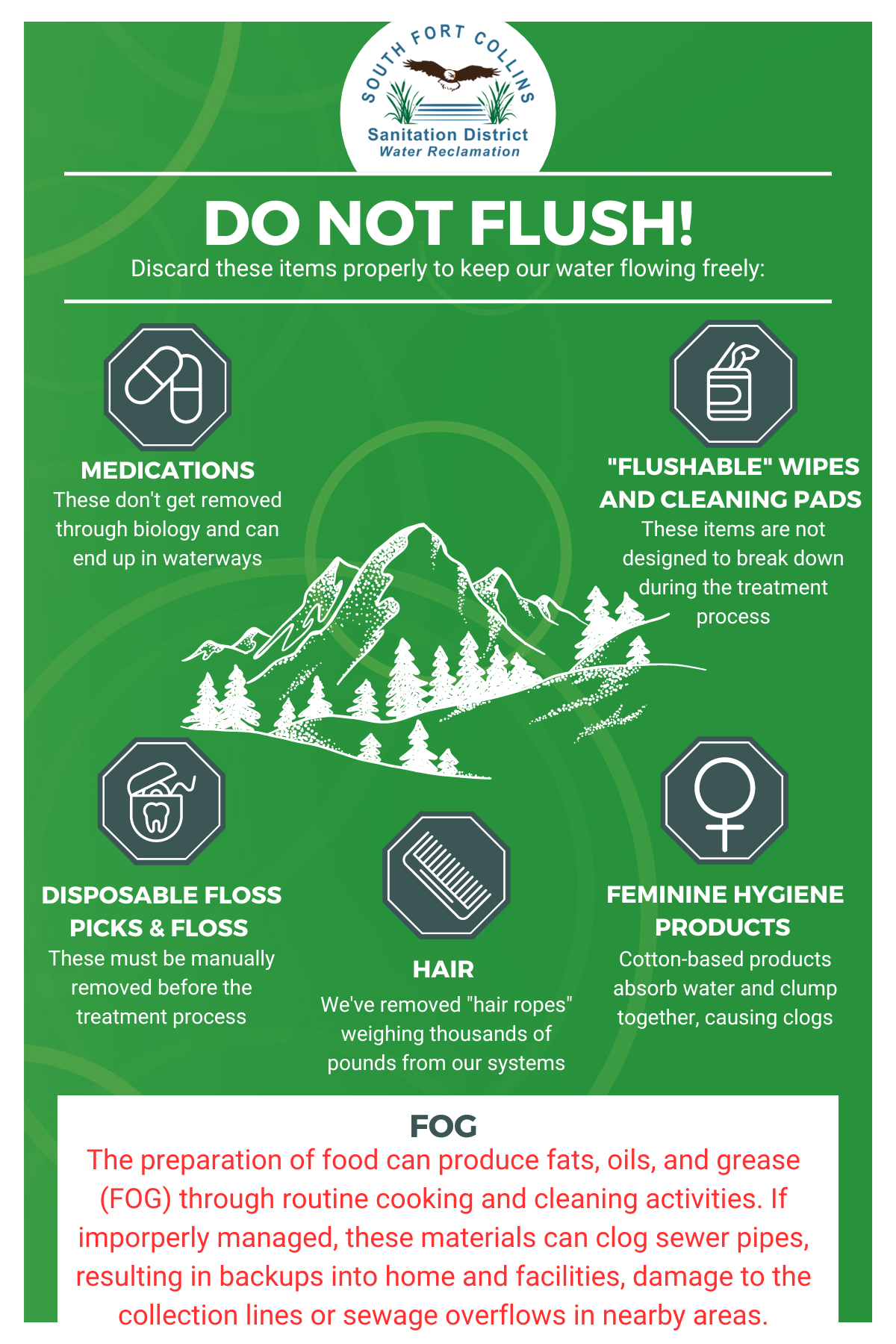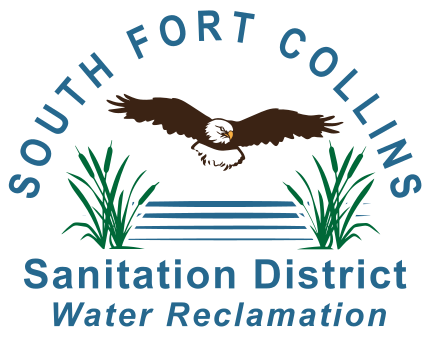Do Not Flush
Be Smart About What You Flush
With over 400 miles of collection lines, our team works diligently to monitor and maintain these lines in order to prevent clogs and backups that can affect customers. In addition to our work, we look to our customers to do their part to prevent problems by watching what they flush down their toilets and drains.
When In Doubt, Throw It Out
When it comes to what to flush, remember the three P’s: pee, poo & (toilet) paper. These three things are designed to break down during the treatment process and keep things flowing as they should. Although other items may be advertised as flushable, anything outside of the three P’s can cause damaging clogs or backups farther into the wastewater system.
Here are some of the most common items that we find at the water reclamation facility:

- Medications. These do not get removed through biology and can end up in waterways. Instead of flushing them, we recommend using a medication disposal program, like those indicated on this map from the Colorado Department of Public Health & Environment.
- Swiffer pads and flushable wipes. As mentioned above, even though they may be called ‘flushable,’ wipes and pads like these aren’t designed to break down during the treatment process. That means they can cause clogs or must be removed during the early stages of wastewater treatment, requiring more time and money.
- Disposable floss picks and floss. Similar to the “flushable” wipes, these items don’t break down during our process and must be removed from the wastewater before it can continue through treatment.
- Hair. Imagine what happens to a drain in your home with your family’s hair, now multiple that by every home in the District. Just like in your drain, hair collects into pumps and other areas of the system and can cause the flow of wastewater to slow or be blocked entirely. We end up with hair ropes (weighing hundreds, even thousands, of pounds) that must be removed from our systems to prevent blockages from becoming even worse.
As more items that aren’t intended to be flushed reach our facilities, or get stuck in the system and accumulate, it becomes costly for our team. This is a cost that could be passed on to customers through rate increases in order to maintain a high-quality, functioning wastewater system.
Sinks & Other Drains
Toilets aren’t the only spot to watch what you put down. Sinks and other drains can also be culprits of clogs! A good rule of thumb is to keep fats, oils and grease (commonly referred to as FOG) out of your drains. These products don’t break down, even when you run your garbage disposal, and clogs can send untreated wastewater backwards into homes. In addition to obvious culprits, like cooking grease, also watch out for things like salad dressing which can contain large amounts of oil. You should also consider what is being put into your garbage disposal, as these solids cannot travel through the system as easily and cause clogs along the way.
To be safe, consider scraping plates into the trash can rather than the sink and be sure to properly dispose of your FOG by sealing into a container and throwing into the trash or taking it to an oil recycling center.

Let’s Get Down To Business
By watching what goes into your toilet and down your drains, you’re doing your part to help maintain our systems and prevent backups into your home. If you remember to follow the three P’s and keep in mind that FOG clogs, you’re well on your way to keeping things flowing.
‘Flush’ Facts
We find quite the assortment of items here at the water reclamation facility and at lift stations that are pulled out of the system. The most commonly found items include cell phones, ID’s, toys, jewelry and money.

